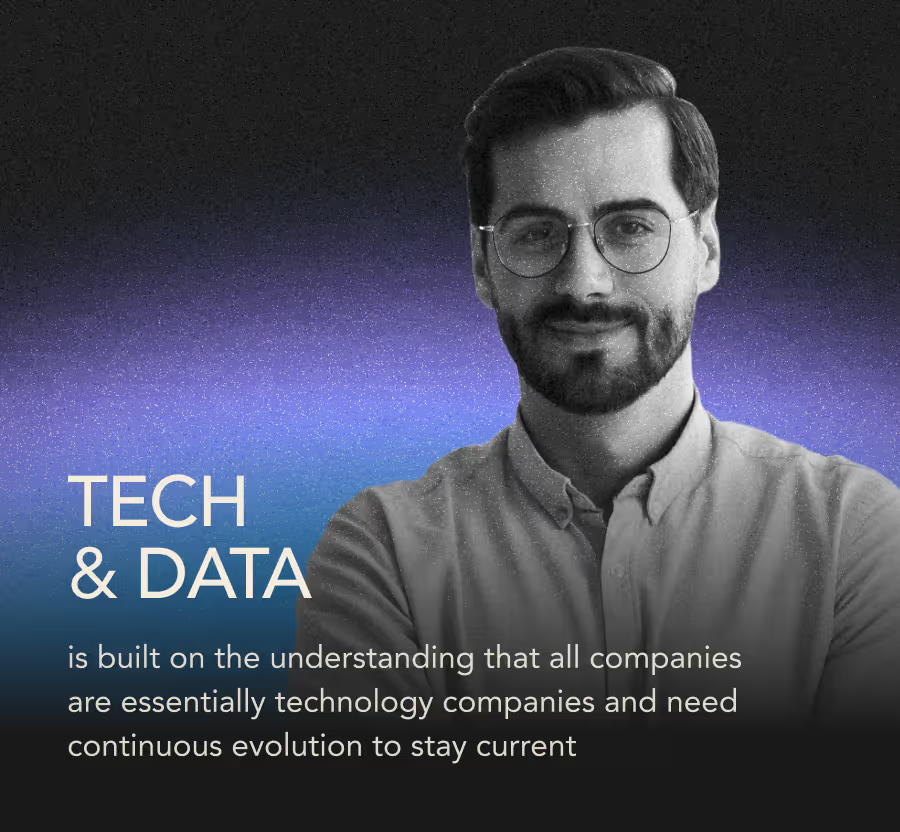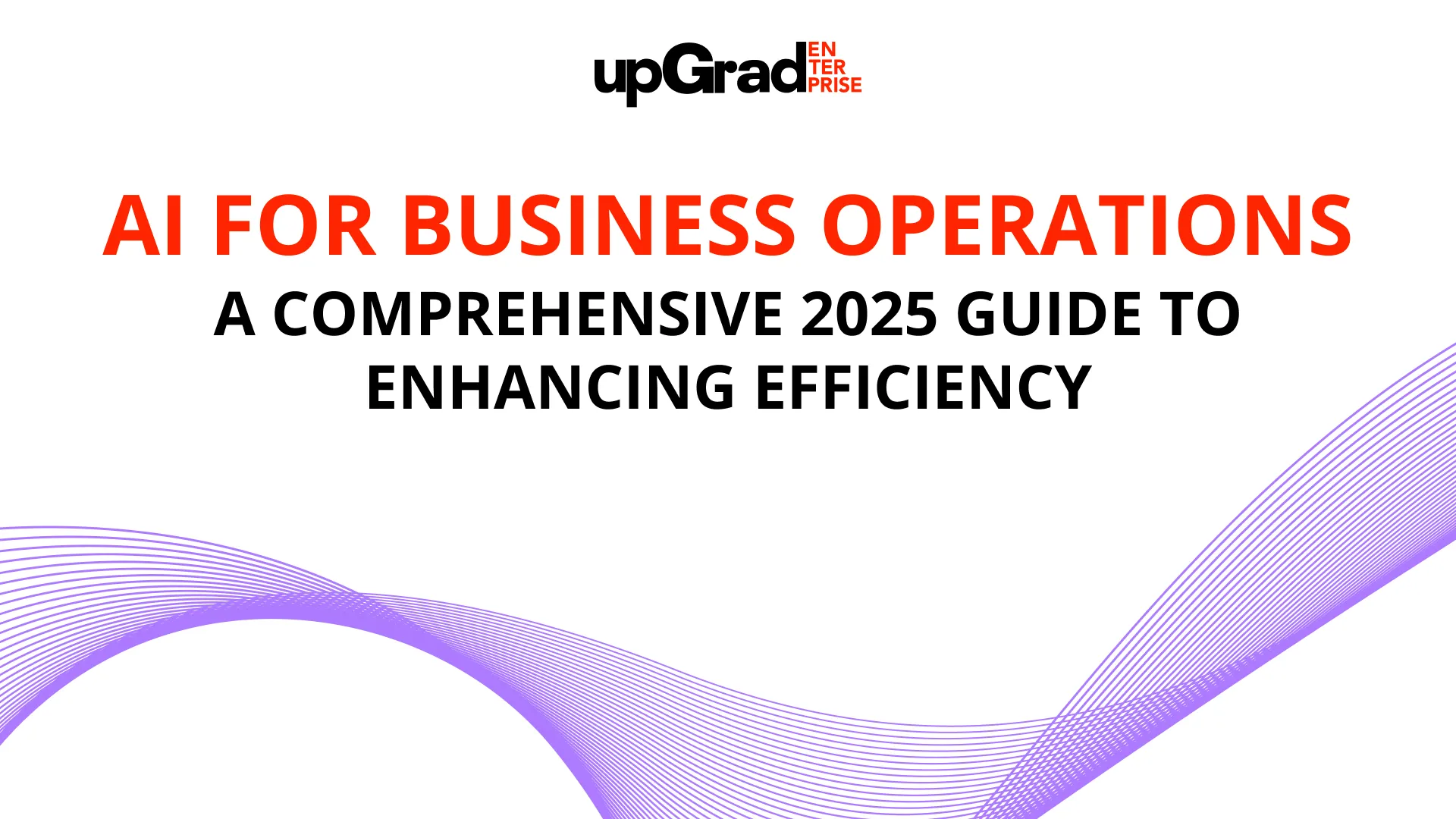AI is changing the way businesses operate and conduct themselves.
Moving towards 2025, the need for AI to streamline processes, cut costs, and increase efficiency is becoming increasingly apparent and vital to an organization’s success.
In this guide, we take a closer look at how mid to large-sized enterprises can leverage AI to stay transformed at par with standards or even lead to setting up new grounds for operational excellence.
Understanding AI in business operations
What is AI for business operations?
AI for business operations refers to the application of artificial intelligence technologies to improve and automate the efficiency of business processes.
This involves utilizing advanced algorithms and machine learning techniques to analyze vast amounts of data, predict outcomes, and make real-time decisions that traditionally require human intervention.
Why AI? The business case for artificial intelligence
The adoption of AI in business operations offers substantial benefits:
- Cost reduction: AI can significantly decrease operational costs by automating routine tasks and optimizing resource allocation.
- Enhanced speed and efficiency: AI-driven tools streamline operations, from supply chain management to customer service, ensuring faster turnaround times and higher productivity.
- Error minimization: AI systems reduce human error, ensuring more accurate outputs and dependable processes.
With these compelling advantages, AI is not just a technological upgrade but a strategic necessity for businesses aiming to thrive in 2025 and beyond.
Current trends in AI for business operations (2025 perspective)
AI and the evolution of supply chain management
The use of AI in supply chain management is just one example of how deep learning and automation can completely transform an industry.
AI-induced solutions that use predictive analytics to predict demand and adapt supply methods accordingly—helping sustain the most efficient concentration of resources.
AI in workforce automation: Beyond the hype
Beyond the theoretical, AI in workforce automation is showing tangible benefits.
This shift not only improved the speed of production but also allowed human employees to focus on more complex, value-adding activities.
AI tools are increasingly being used to augment human capabilities rather than replace them, enhancing both productivity and job satisfaction.
Tools and technologies for implementing AI
Choosing the right AI tools
Selecting the right AI tools is crucial for achieving desired operational efficiencies.
Tools such as IBM Watson, Google Cloud AI, and Microsoft Azure AI offer a range of solutions tailored to various business needs.
When choosing an AI tool, businesses should consider factors such as scalability, ease of integration, support services, and specific features that align with their operational goals.
Technology stack integration
Successfully integrating AI tools into the existing technology stack is a key step in the adoption process.
For example, integrating AI with an ERP system can enhance data processing and decision-making capabilities. A practical tutorial might involve:
- Evaluating the current IT infrastructure to ensure compatibility.
- Working with AI vendors for seamless integration.
- Conducting pilot tests to refine the integration process before full-scale deployment.
This approach minimizes disruptions and maximizes the benefits of AI tools, making the transition smooth and effective.
Step-by-step guide to implementing AI in operations
Assessment: Evaluating your current operations
Before we jump into the world of AI, let's take a moment to see where you're at. Think of this as a readiness check-up for your business:
- Take a good look at your current processes. What's working well? Where do things tend to bottleneck? This isn’t just busywork; it’s about pinpointing where AI can really make a difference.
- Evaluate your data. AI loves data, but is your data ready to love AI back? This means looking at what you've got and figuring out if it’s clean, organized, and robust enough to support smart technologies.
- Consider your team’s skills. Are your people ready to embrace AI tools? This isn’t about turning everyone into data scientists overnight but ensuring there's a willingness and a basic framework to learn and adapt.
Taking these steps doesn’t just help you throw technology at problems—it ensures the tech you choose fits like a glove, tailored to what your business actually needs and can use effectively.
Planning: Laying the groundwork for AI adoption
Developing a strategic plan for AI adoption is critical to its success. This involves:
- Setting clear objectives for what you hope to achieve with AI.
- Creating a timeline for implementation that includes milestones and key performance indicators (KPIs).
- Allocating resources, including budget and personnel, specifically for AI projects.
A well-thought-out plan acts as a roadmap, guiding the smooth introduction and scaling of AI technologies within business operations.
Execution: Rolling out AI solutions
The final step involves the actual deployment and management of AI solutions:
- Begin with pilot projects to test AI solutions on a smaller scale before a full rollout.
- Monitor the performance of AI implementations continuously and adjust strategies as necessary.
- Provide training and support to employees to ensure they are equipped to work with new AI tools.
This structured approach to implementation ensures that AI tools are not only deployed but are also effectively integrated into everyday business operations, providing real and measurable benefits.
Future of AI in business operations: What to expect beyond 2025
Emerging AI innovations
Looking ahead past 2025, the path of AI innovations is on an upward slope, promising even greater enhancements to how we manage our businesses.
What's on the horizon?
We're talking about autonomous systems that make decisions on their own, a deeper mesh with the Internet of Things to make operations smarter, and advanced predictive analytics that spot potential hiccups before they become issues.
These developments will not just polish up our existing processes—they'll open new paths to streamline efficiency and deepen engagement with our customers.
Staying ahead: Building a culture of continuous improvement
To fully capitalize on the benefits of AI, businesses must cultivate a culture that embraces continuous learning and adaptation. This involves:
- Encouraging a mindset of ongoing innovation among employees.
- Regularly updating and upgrading AI systems to harness cutting-edge capabilities.
- Engaging in partnerships and collaborations that foster knowledge exchange and drive technological advancement.
Fostering this culture ensures that businesses remain agile and responsive to new AI opportunities and challenges, maintaining a competitive edge in their respective industries.
Final thoughts
AI for business operations is more than just a technological upgrade; It is a strategic imperative that can redefine the efficiency and competitiveness of enterprises.
As we move into 2025 and beyond, the integration of AI into business operations is not just advisable; it is essential for those looking to lead in their markets.
By understanding AI's potential, strategically implementing the right tools, and preparing for future innovations, businesses can achieve unprecedented operational excellence.
Frequently asked questions (FAQ)
Q1 What is AI for business operations?
AI for business operations refers to the utilization of artificial intelligence technologies to enhance and automate various business processes. This includes using machine learning, data analytics, and automation tools to improve decision-making, reduce operational costs, and increase efficiency across various departments such as supply chain, customer service, and human resources.
Q2 How can AI enhance business efficiency?
AI enhances business efficiency by automating routine tasks, optimizing logistics, predicting market trends, and facilitating real-time decision-making. This leads to faster operations, reduced human error, and lower operational costs, enabling businesses to focus on strategic growth and innovation.
Q3 What are some challenges in integrating AI into existing business operations?
Challenges may include data privacy concerns, high initial investment costs, resistance to change from employees, and the need for upskilling staff to handle new AI-driven technologies. Overcoming these challenges requires clear communication, comprehensive training programs, and ensuring robust cybersecurity measures are in place.
Q4 How will AI in business operations evolve beyond 2025?
Beyond 2025, AI is expected to become more autonomous, with capabilities for making independent decisions and more profound integrations with the Internet of Things (IoT). Businesses will increasingly rely on AI to drive not only operational efficiencies but also strategic initiatives and innovation.
Q5 Why is continuous improvement important for businesses using AI?
Continuous improvement in AI helps businesses stay competitive and responsive to new technological advancements and market demands. It involves regularly updating AI systems, fostering a culture of innovation, and participating in knowledge-sharing initiatives to adapt to and leverage emerging AI technologies effectively.









